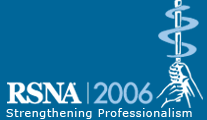
Abstract Archives of the RSNA, 2006
Harris Luther Cohen MD, Presenter: Nothing to Disclose
Participant will learn : 1. To identify the normal structures of the scrotum in children and adolescents. 2. Various imaging techniques, essentially of Ultrasound and doppler Ultrasound, for obtaining better images for the improved analysis of these structures. 3. Findings necessary for identification of abnormality. 4. Information re: imaging and its analysis as well as clinical analysis of the scrotum in diagnosing or disproving the presence of: traumatic injury, torsion of the testicle, torsion of testicular appendages, testicular neoplasms, rete testis, testicular microlithiasis and the controversy regarding its associations, the undescended testis and scrotal edema, a some time clinical simulator of testicular torsion.
Normal infant testes:1.5cm x 1cm. Largest during 1st months when gonadotropin levels high. Volumes stable til 6yo then slow growth until enlargement at puberty with gonadotropin rise. Echognicity increase >8yo due to germ cell/tubular maturation. Scrotal wall: 3-6mm thick. Beneath:two layers tunica vaginalis; outer(parietal)/inner(visceral), residua of processus vaginalis. Fluid of hematoceles/hydroceles accumulate here. Look at both testes allows side by side comparison to note abnormality. Best done: transverse plane. May require curved linear array + typical linear array probe. Hematoceles : acutely echogenic. With time clot dissolves-->less echogenic. May develop hematocele from intrascrotal trauma or distal trauma (e.g. injured spleen) in the presence of a patent processus vaginalis. Imaging break in tunica is sign of testicular fracture. Most child hydroceles are idiopathic. Possibly 50% due to trauma. May also accumulate in infection (e.g. epididymitis) torsion or neoplasm. Varicoceles:dilated (> 2mm) veins of the pampiniform plexus develop because of incompetence of the internal spermatic vein. Prominent ones --> decreased growth and atrophy of the ipsilateral testicle. At least 10% are bilateral. Solitary right sided ones uncommon-need workup for possible abdominal mass as cause. Epididymitis: most common cause of acute painful scrotum in postpubescent, most bacterial (may be viral eg mumps). 20, 9:1. Orchitis more easily diagnosed when focal hypoechoic area noted in testicle adjacent to epididymitis. Child/adolescent acute scrotal pain: evaluate for torsion vs epididymitis. 6-12yo: consider torsed epididymal/appendix testes. Teen testicular torsion usually intravaginal (bell clapper), neonatal: usually extravaginal type occurring antenatally. Tumors uncommon in child except with ALL->hypoechoic/increased flow, often sanctuary site. Most(65-75%)primary testes tumors of child are germinal cel;25% nongerminal cell
Cohen, H,
Scrotal Disease. Radiological Society of North America 2006 Scientific Assembly and Annual Meeting, November 26 - December 1, 2006 ,Chicago IL.
http://archive.rsna.org/2006/4426060.html

